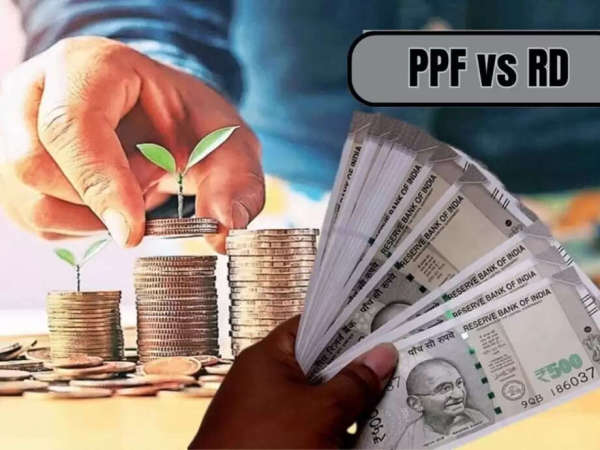
There are two popular savings schemes in the country: PPF (Public Provident Fund) and RD (Recurring Deposit). By investing ₹1 lakh (₹100,000) each year, you can build a substantial corpus over 10–15 years. But the question remains: which one offers higher returns and is safer? Also, which of PPF and RD (PPF vs RD) will double your money first? Let's explore the full returns, security, and maturity profiles.
What is PPF?
PPF is a government scheme that allows you to invest for up to 15 years. It offers 7.10% annual interest. Both interest and principal are tax-free. It's a safe and tax-saving option for the long term.
What is an RD?
RD is a scheme offered by banks and post offices that requires a fixed monthly deposit. The interest rate ranges from 5% to 8%, but the interest is taxable.
What is the difference between the two?
PPF is better for long-term investment and tax benefits, while RD is best for short-term investment and fixed returns. PPF funds are locked in, while RD offers more flexibility.
FD and RD Calculation
If you invest ₹1 lakh annually in an FD or RD for 10 and 15 years, then:
Term Investment Amount Total Estimated Amount in PPF (average 7.10%) Estimated Amount in RD (average 7.5%)
₹10,00,000 in 10 years could become approximately ₹15,70,000-₹16,00,000 (including interest compounding). RD could probably be in the range of approximately ₹15,30,000-₹15,60,000 (depending on bank rate and compounding).
₹15,00,000 in 15 years could become approximately ₹29,50,000-₹30,50,000 in PPF. RD may not grow as much because interest rates fluctuate over time. Subject to change, estimates may be around ₹28,50,000-₹29,50,000.
These estimates depend on rates and compounding conditions. PPF interest is compounded annually and offers significant tax benefits.
Which is better for you?
If your plan is for the long term (10-15 years or more) and you want all three—interest, tax savings, and security—PPF is a better option. However, if your needs are short-term, you need to deposit a small amount each month, or you need more liquidity, an RD may be the best option.
Disclaimer: This content has been sourced and edited from Dainik Jagran. While we have made modifications for clarity and presentation, the original content belongs to its respective authors and website. We do not claim ownership of the content.